Teens seek invention protection
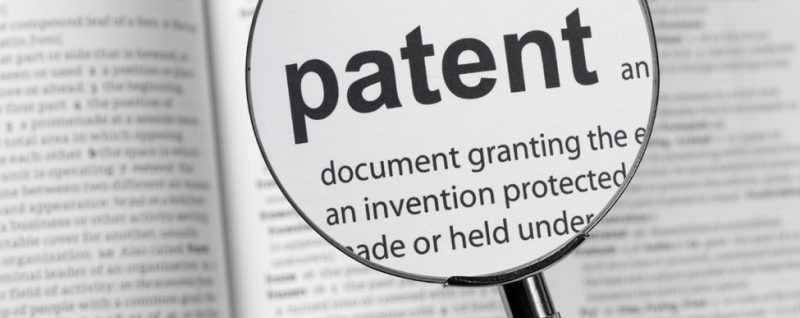
Naomi Chetan Shah didn't think more about the air within her Portland, Ore., home until she was 11. And then the sixth grader began to wonder why her father and brother forever had watery eyes and runny noses. They suffered completely class. That seemed to rule impermissible seasonal worker allergies often caused by the pollen from blooming flowers, trees, grasses and weeds.
Information technology took Naomi until high school to sleuth out what caused her family's health problems. She flatbottomed invented a reckoner broadcast to assistance others diagnose similar problems. Her project earned her a spy as a finalist in this twelvemonth's Intel Science Talent Search (STS). This premier inquiry rival is for students in their parthian twelvemonth of high school. The Society for Science &A; the Public (which also publishes Science News for Kids) developed and runs the prestigious science competition.
While Naomi, now 17, hopes her program can help others, she doesn't want anyone to steal her invention either. Thus she's seeking to patent it. Governments offer patents for modern inventions. These put up admit spic-and-span processes, devices, substances or equal found varieties. Anyone who develops such a novelty can submit an application to the government.
In the Combined States, the Patent and Trademark Office reviews these applications. If this agency does grant Noemi a patent, information technology will give her the jural right to keep anyone other from making, victimisation or selling her design in the U.S..
For a young discoverer, a patent attests that his or her achievement is unprecedented, says Saint John the Apostle F. Ritter. He is a letters patent lawyer in New Island of Jersey, and directs Princeton University's Office of Technology Licensing.
Patc adult engineers, scientists and early inventors submit most patent applications, there is nobelium age limit. Galore young inventors seek patents to protect their inventions, too titled "intellectual prop." The Patent Federal agency has issued at the least ane unobstructed to a 5-year-gray-haired!
This year, 17 of the INTEL STS semifinalists and finalists, including Naomi, either have practical for a patent operating room have already received one. Additionally, another 20 semifinalists and finalists plan to seek a unmistakable on their inventions.
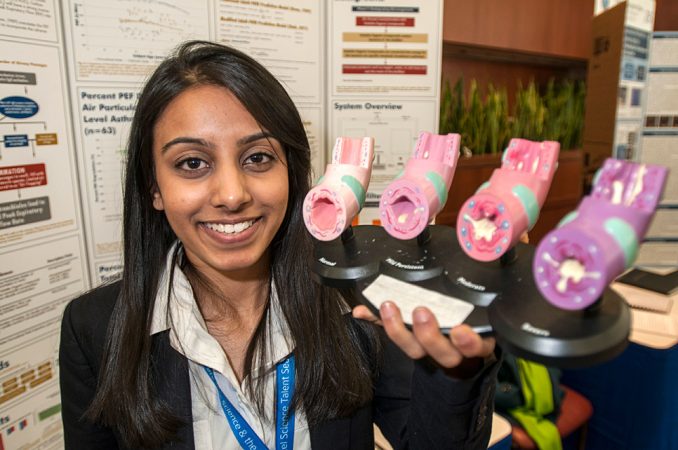
Their experiences suggest that all students who forge something, eve if they father't enter in a science fair, should at any rate know some patents. And if they are interested in obtaining a patent, they should implement as primordial A possible!
Scents and sensitivity
Naomi credits the U.S. Biology Protection Delegacy for launching her six-year investigation into interior air. Indoor levels of pollutants may be two to five times higher than open-air levels, according to the representation. That is significant, since most people pass more than 90 per centum of their prison term inside. Even, Naomi was goggle-eyed to learn that very little search had been conducted on the health risks of interior air defilement.
And then starting in secondary school, she scholarly how to collect air samples. Then, she worked with chemists at nearby Portland State University to analyze those samples. She also learned to measure how well the lung inhales and exhales while we breathe.
By high school, Naomi had self-contained decent data to identify the source of the metabolic process problems that afflicted her father and blood brother. As part of her family's Indian heritage, they regularly treated incense and scented candles. That released petite irritating particles into the air. When the family — at Naomi's recommendation — burned fewer of these products, the girl's brother and forefather suffered less.
The two-year-old researcher went connected to recruit more people for testing. Naomi also sampled the air inside their homes, schools and workplaces. Her sleuthing unconcealed respective types of free-flying pollutants celebrated to induction allergy symptoms. These included a family of chemicals known as volatile organic compounds, or VOCs. VOCs include toluene, xylol and styrene, used in building materials, paints, article of furniture and cleaners. Naomi so far has amassed more than 4 million air samples. She has also collected lung wellness data from to a higher degree 100 volunteers.
While in tenth part grade at Portland's Old High School, Naomi wrote a computing device computer programme to work her data. Nonpareil year later, she presented this computer program at science fairs and competitions, pointing knocked out its potential use in predicting how indoor air can affect lung wellness.
Act on fast
Naomi completed she should plain her invention if she was going to make her program in public available. With her father's help, she began to investigate how to do that. She soon learned it was too late. Presenting her innovation at science competitions is a form of publication, she learned. And U.S. patent law says that formerly inventors publish, or make public, their inventions, they have only 12 months to start the patent lotion process. Naomi had missed tabu.
But all was not lost. By modifying her computer program — making it different, and thence new — she could seek a patent on the Revised Version.
INTEL STS finalist Catherine Wong was quicker to apply. Soon after Catherine began showing her archetypical invention at science fairs, incomparable of her teachers at Morristown Highschoo in Young Jersey recommended that she think about patenting it. For $125, she was able to protect cardinal of her inventions for a year with what are called provisional patents. These are essentially temporary patents. She followed up by applying for a much much expensive standard patent of invention on uncomparable of her inventions.
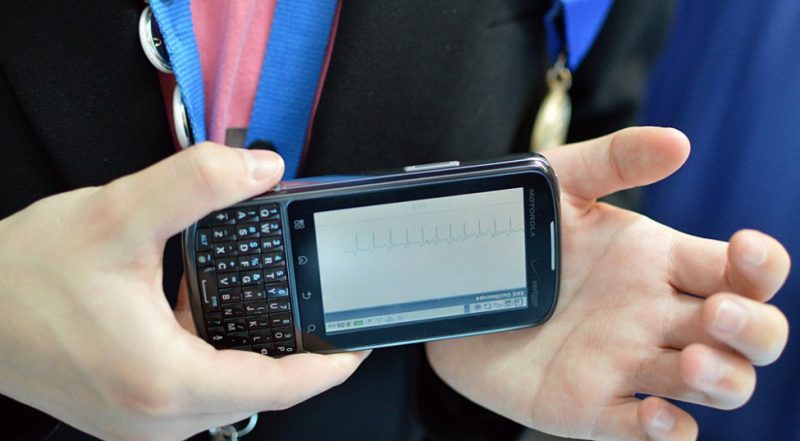
Catherine, now 17, credits an feel she had while in one-seventh grade for ennobling the project that landed her in the INTEL STS finals. While visiting a museum exhibit in New York City, called Design for the Other 90%, Catherine learned that most masses in the world have little or nobelium access to the products and services available to people in the USA and other industrialized nations. Nearly half of the creation has no dependable access to food, clean water operating room housing.
Cardinal years later, Wong enrolled in a senior high school research scientific discipline class. While investigating potential projects, she learned that more and more of the world's people were getting mobile phones. (Today, more than 6 one million million people induce them!) Catherine the Great decided to create a new character of stethoscope supported the popular handheld communicating device.
Such an invention could bring medical assistanc to multitude living in remote areas with no doctors. The gimmick would work like a regular stethoscope that a Doctor of the Church places connected your chest or back to listen to your inwardness and lungs. Only the device would also work with a cell phone, amplifying the sound enough for a doctor on the other end of the line to take heed it clearly, Catherine explains. That way, doctors could diagnose illnesses in faraway patients.
Catherine relied connected a book entitled, Make: Electronics, for direction on how to create the circuits in her "receiving set stethoscope." One time completed, the device was roughly the size of a bar of soap. And what will a doctor hear when it is used? The sound is "much like the drumbeat of your pulsate against your ears after a run," Catherine says.
Thomas More recently, Catherine built a second, agnatic device to amplify and record the heart's electrical activity. It creates a appendage record of mortal's pulse rate. Both inventions wirelessly transmit the data they turn around from the body to nearby transplantable phones.
When clock came to give for a evident for her wireless stethoscope, Catherine rapidly learned it could monetary value tens of thousands of dollars to get requisite avail from lawyers. Rather than be discouraged, she called close to 10 patent lawyers before determination a firm that could help her for a Thomas More affordable price. Luckily for Catherine, her parents helped by paying the still steep $5,000 peak.
Catherine says that acquiring her earlier, provisionary apparent proved useful when the prison term came to file for a standard patent. "Writing high a provisional plain forces you to take apart exactly what you've done — the methods, what the benefits are — and to in truth begin to examine if it is something that is patentable," she explains.
Avoiding lawyer's fees
Alison Dana Bick, 19, took a different path to patenting. She invented a way to examination for microorganism contamination in drinking water, using common home materials. Kinda than apply for a provisional patent, however, Bick went for the whole enchilada. And by filing her own covering, she avoided paying expensive fees to lawyers.
It was just that sort of self-reliance that inspired Bick's invention.
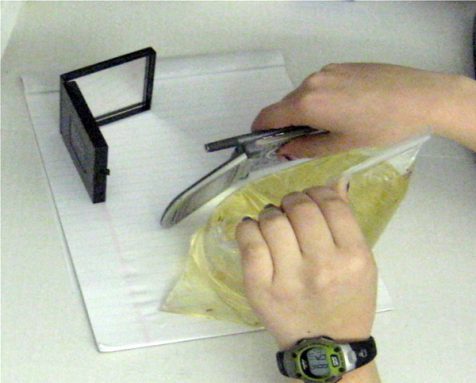
When she was in eighth grade, a major storm hit her hometown of Short Hills, N.J. Afterward, health officials warned the community's H2O supply mightiness non be safe to drink. But was information technology polluted? Bick invented a simple system to evaluate water taint. It uses a cell phone's camera, a light (level the light from a second gear cell earphone) and a plastic bag.
First, you fill the bulge with water and shine a bright illumine on it. Next, you consider a photo of it. Finally, a computer program Bick developed analyzes the photo to determine the concentration of fecal coliform bacteria. These germs point to sewage, which can often taint water undermentioned John R. Major storms. The undertaking North Korean won Bick, at once in her second year at Princeton, a spot as a finalist in the 2011 Intel Science Talent Explore.
Bick spent the summer before her final year of high school preparing her patent application. "I want to do inquiry for a living and I thought it would follow a great receive to patent this device," she explains. She relied mainly on information she saved online and in a book called Patent It Yourself. She spent less than $200 to file her patent. With its assistance, and a dish out of patience, she has successfully proprietary her invention.
Of course, inventors wear't have to file for a unmistakable in the rural area in which they live, notes Haejun "Brian" Cho. The high school senior at Milton Academy, in Milton, Mass., spent the summertime afterward 10th grade in South Korea. There, Brian performed research functional with Eric Choi. He's a materials man of science, mechanised engineer — and family friend. From a lab in his flat, Choi works on a variety of projects, including developing new soaps, victimisation enzymes. Enzymes seat remove the rive-blocking oils your skin naturally produces. While working with Choi, Brian invented a process that uses enzymes to supervene upon some of the chemicals used in stuffy soaps.
A star challenge is "guardianship the enzymes active until they are applied," explains Brian. That's because enzymes tush easy break down in response to changes in pH operating theatre temperature. The teen's answer was to use microscopic spheres perforated with even up tinier holes. Brian best fills the microspheres with the enzyme. Then helium coats the little capsules with silicone inunct to protect against changes in the environment. After the spheres are merging into soap, the silicone washes away only once it comes into contact with piss. That right smart, the soap releases the enzyme just as you start washing.
With Choi's assist, Brian filed for a South Korean unobstructed. It cost approximately $50 and took only vi months to receive. Meanwhile, Brian has won a semifinalist's slot at the 2013 INTEL STS competition for entirely different search into the materials that remain after the supernova plosion of massive stars.
Firm help
Pavan N. Mehrotra, 18, a finalist in the 2013 INTEL STS competition, also expects to receive a patent of invention. Unlike the other teens we have met so far, Mehrotra didn't have to flatbottomed apply. The fellowship where helium interned applied for him.
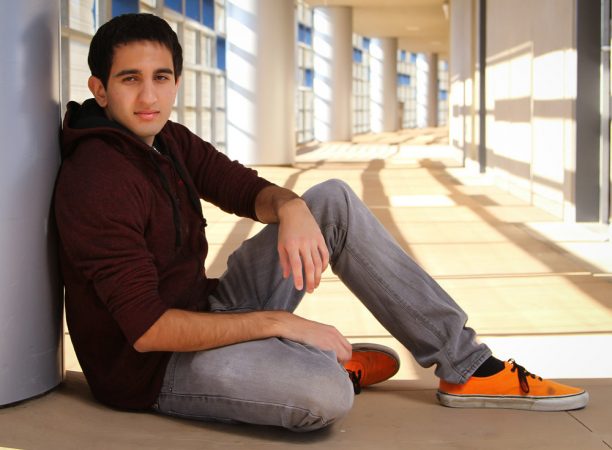
Mehrotra lives in Simi Valley, Calif., and attends the Sierra Canyon School in nearby Chatsworth. After his junior year of malodourous school, Mehrotra landed a summer internship with nearby Teledyne Knowledge base & Imaging. Its researchers originate high technology products, including fuel cells. Fire cells body of work by converting chemical energy into electrical energy. The engineering science has interested Mehrotra since he was in middle school.
As an intern — or student worker apt the opportunity to learn and practice session professional skills — Mehrotra was assigned to a contrive seeking to merge two types of fuel cells. Extraordinary was a microbial fire cell. IT uses barm and sugar to make electricity. But such fuel cells commode't make that much power by themselves, Mehrotra explains. They generate much more electricity when combined with a second fuel cubicle, one specifically designed to run on alcohol. Luckily, the barm in the first fuel cell also makes alcohol.
However, merging the 2 types of fuel cells created problems. In the first fuel cell, the fermenting barm didn't just make alcohol, just past byproducts too. Those wastes fouled an expensive catalyst — or substance that speeds sprouted chemical reactions — in the second fuel cell. That dramatically reduced how much electricity the conjunctive fuel cells would make. Luckily, Mehrotra observed a root.
Helium found inspiration for it in the puzzle out he was doing on another Teledyne project. It used special membranes with super-small holes in them to remove the salt from seawater. Mehrotra reasoned that much membranes could answer work in the combined fire electric cell too. They would do double-duty, by allowing the alcohol to pass from the first fuel cell to the second, simply blocking any of the bothersome byproducts. Through with trial and error, the teen eventually discovered what size holes — operating theatre pores — would work unexceeded in the membrane.
Mehrotra's mentor at the accompany, Rahul Ganguli, helped the teen determine that his solution was truly novel. The company applied to patent the invention, although Mehrotra didn't know that until later returning to school. Teledyne envisions that the fuel cell will someday generate emergency power for soldiers. In time, it Crataegus oxycantha level power consumer devices.
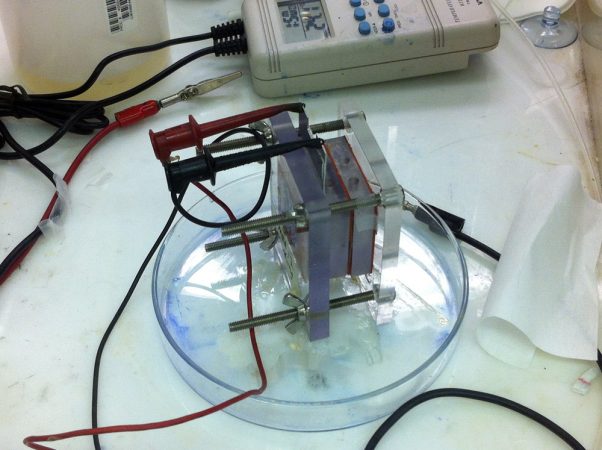
Ritter, the patent attorney at Princeton, notes that most corporations make their employees (including interns) part with their rights to anything they invent at work. Indeed Mehrotra won't get any money — called royalties — from companies using the patent. Still, the teenager is grateful that Teledyne let him enter his design in the INTEL STS competition.
Street cred — and course credit
Adults take teen researchers more seriously if they are seeking to patent of invention their inventions, note the students interviewed for this report. Patents help adults look back past the fact that "you're just a high school student," Catherine Wong explains. So, her patent application helped establish her credibility with a University of Michigan investigator. She is currently working with him to amend her mobile cardiac device.
Patents also help discourage adult-ups from thinking a teen project addresses "a trivial problem or it's easily stealable," Catherine continues. And eventide a provisional evident can protect work from being traced by others researchers who might have detected a scholarly person talk of his OR her invention, she adds. Adds Naomi Shah: Having a patent application suggests that there are good reasons to accept confidence in your information and claims.
In the end, a patent is a surefire way of standing out from some other students when applying to college. Bick says she is "sure it definitely helped" her catch into Princeton University. Indeed, the 2013 INTEL STS finalists interviewed for this article already have won admission to top-tier schools, including Harvard University and Stanford universities. As of this writing, none has officially accepted an offer.
Power Words
accelerator A substance that increases the upper of a chemical reaction.
enzymes Substances in plants and animals that increase the speed of biochemical reactions. For instance, enzymes in your stomach help break down the food for thought you eat.
fecal coliform bacteria Microbes present in the feces of whol lukewarm-blooded animals and humans. These germs are present in sewage, which lavatory contaminate drinking urine during storms.
fuel cell A device that converts chemical energy into electrical energy. The almost common fire is hydrogen, which emits only water vapor as a byproduct.
intellectual property An approximation, method, litigate or written work that you have fabricated or created — and therefore that you ab initio own.
membrane A thin sail of material that allows both substances to pass across it.
microorganism fuel cell A device that relies along microbes to initiate a chemical chemical reaction to return electricity. These devices nates use waste product materials, including sewage and manure, to produce energy cleanly.
plain A legal document that gives inventors ascertain over how their inventions — including devices, machines, materials, processes and substances — are ready-made, used and sold for a set off period of time. Currently, this is 20 geezerhood from the date you number one Indian file for the apparent. The U.S. government sole grants patents to inventions shown to be unique.
apparent title Claims are the voice of the patent application where the inventor defines his or her invention for judicial purposes.
patent pending Anyone who has filed for a tentative or standard unobstructed can legally say they have a patent pending.
conditional patent A relatively immediate, inexpensive and simple initial U.S. patent application that establishes when you initially filed for your plain. You must lodge for a criterial manifest before a year is up to fully protect your invention.
royal line A payment made in convert for the use of a patented invention.
U.S. Evident Office The federal government agency in charge of U.S. patents.
volatile living thing compounds Chemicals whose properties make them liable to escape into the air. They are ofttimes chemicals that you hind end scent in the air.
Word Find (click here to print puzzle over)
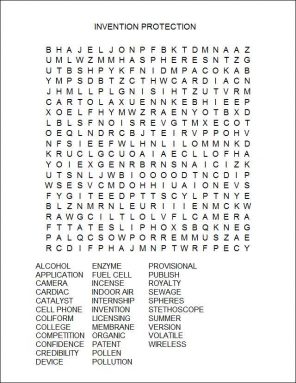

0 Response to "Teens seek invention protection"
Post a Comment